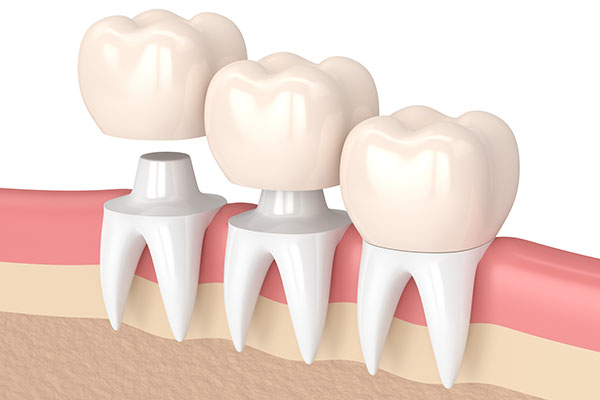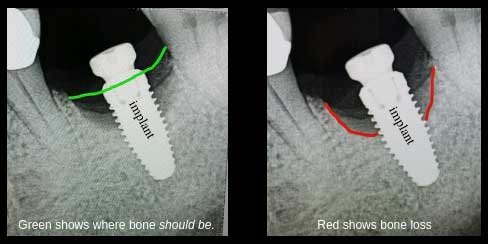How to Fix a Loose Dental Crown: Quick and Easy Steps
To fix a loose dental crown, visit your dentist immediately. Use dental cement as a temporary solution until your appointment.
A loose dental crown can cause discomfort and potential oral health issues. It’s essential to address it promptly to avoid complications. Dental crowns can become loose due to various reasons, including decay, wear and tear, or trauma. Ignoring a loose crown may lead to further damage or infection.
Temporary fixes like dental cement can provide short-term relief, but professional dental care is crucial. Regular dental check-ups can help prevent such issues. Maintaining good oral hygiene is also vital to ensure the longevity of your dental crown. If you experience a loose crown, contact your dentist for an appointment as soon as possible.
Identifying A Loose Crown
Is your dental crown feeling unstable? Understanding the signs can help. A loose crown can lead to discomfort and further dental issues. Identifying it early is key to maintaining oral health.
Signs Of A Loose Crown
- Sensitivity to hot or cold foods
- Pain or discomfort around the tooth
- Movement of the crown when you touch it
- Visible gaps between the crown and the gum
- Unusual taste in your mouth
Common Causes
| Cause | Description |
|---|---|
| Decay | Decay under the crown weakens its hold. |
| Cement Failure | The adhesive holding the crown can wear out. |
| Injury | Impact to the mouth can dislodge the crown. |
| Chewing Hard Foods | Hard foods can break the crown’s seal. |
| Wear and Tear | Over time, crowns can naturally become loose. |
Immediate Actions To Take
Experiencing a loose dental crown can be alarming. Taking immediate action is crucial to prevent further damage and discomfort. Here are some essential steps to manage the situation effectively.
Handling Pain Or Discomfort
If you feel pain or discomfort, address it promptly. Over-the-counter pain relievers can help. Use ibuprofen or acetaminophen as directed on the package.
Rinse your mouth with warm salt water. This can reduce inflammation and clean the area. Mix one teaspoon of salt in a glass of warm water.
Avoid eating hard or sticky foods. These can worsen the situation. Stick to soft foods until you see your dentist.
Protecting The Loose Crown
Keep the crown safe if it falls out. Rinse it gently with water. Store it in a clean container.
Use temporary dental cement to reattach the crown. You can find this at most drugstores. Follow the instructions on the package carefully.
Avoid chewing on the side with the loose crown. This helps protect it until you get professional care.
| Action | Description |
|---|---|
| Over-the-Counter Pain Relievers | Use ibuprofen or acetaminophen to manage pain. |
| Warm Salt Water Rinse | Mix one teaspoon of salt in warm water and rinse. |
| Soft Foods | Avoid hard or sticky foods to prevent further damage. |
| Temporary Dental Cement | Use to reattach the crown until you see your dentist. |
Following these steps can help manage a loose dental crown. Prompt action can reduce pain and protect your dental health.
Temporary Fixes At Home
Dealing with a loose dental crown can be stressful. It’s important to address it promptly to avoid further damage. If you can’t see a dentist right away, there are temporary fixes you can try at home. These quick solutions can help you manage the situation until you get professional care.
Using Dental Cement
Dental cement is a quick solution for a loose crown. You can buy dental cement from a pharmacy or online. Follow these steps to secure your crown temporarily:
- Clean the loose crown and the tooth area. Remove any debris.
- Dry both the crown and the tooth.
- Apply a small amount of dental cement inside the crown.
- Place the crown back onto your tooth. Press down firmly.
- Hold the crown in place for a few minutes. Let the cement set.
Using dental cement can help keep your crown in place until you see a dentist. Make sure to follow the instructions on the dental cement package.
Avoiding Certain Foods
A loose crown needs gentle handling. Avoid certain foods to prevent further damage:
- Sticky Foods: Avoid caramels, gum, and sticky candies. These can pull the crown off.
- Hard Foods: Stay away from nuts, hard candies, and ice. These can break the crown.
- Chewy Foods: Foods like steak and bagels can dislodge the crown. Eat soft foods instead.
Sticking to a soft diet can help protect your loose crown. Choose foods like yogurt, mashed potatoes, and soup.
Cleaning The Affected Area
Cleaning the affected area is crucial before fixing a loose dental crown. Proper cleaning ensures no debris or bacteria interfere with the reattachment process. Follow these steps to clean the area effectively.
Proper Brushing Techniques
Use a soft-bristled toothbrush to clean around the loose crown. Gently brush in small circles to remove any food particles. Avoid using too much pressure to prevent further loosening of the crown. Brush for at least two minutes, focusing on the affected area.
Rinsing With Antiseptic Solutions
Rinse your mouth with an antiseptic solution to kill bacteria. This helps reduce the risk of infection. Use a solution containing chlorhexidine or hydrogen peroxide. Swish the solution in your mouth for at least 30 seconds. Do this after brushing to ensure thorough cleaning.
When To See A Dentist
Knowing the right time to see a dentist can save your crown. A loose dental crown needs prompt attention. This can prevent further damage to your tooth. In this section, we guide you on recognizing urgent situations. We also provide tips for making an appointment.
Recognizing Urgent Situations
Some situations need urgent dental care. Here are key signs:
- Severe pain: Pain suggests a deeper problem.
- Bleeding: Blood from the crown area is serious.
- Swelling: Swelling might indicate an infection.
- Loose parts: If the crown falls off, see a dentist fast.
These signs need quick action. Waiting can make issues worse. Always act fast if you notice these symptoms.
Making An Appointment
Follow these steps to book a dental appointment:
- Call your dentist: Explain your issue clearly.
- Provide details: Mention any pain, swelling, or bleeding.
- Ask for a quick appointment: Stress the urgency of your situation.
Getting a fast appointment helps. It ensures your crown is fixed soon. Keep your dentist’s contact info handy.
Follow these steps to protect your dental health. A quick response can save your crown and tooth.

Credit: www.gatewayfamilydentist.com
Professional Repair Options
Dealing with a loose dental crown can be stressful. Professional repair options ensure your crown stays secure and functional. Dentists offer several solutions, depending on the crown’s condition and the underlying tooth. Below are two primary professional repair options:
Re-cementing The Crown
If your crown is still in good shape, re-cementing might be the solution. Dentists clean the crown and tooth to remove debris. They then apply a special dental cement to the crown. The crown is placed back on the tooth and adjusted for a perfect fit.
Re-cementing is quick and cost-effective. This method preserves your existing crown and provides immediate relief. It’s crucial to act fast if the crown is loose. A loose crown can lead to further dental issues.
Creating A New Crown
Sometimes, the old crown can’t be re-cemented. In such cases, dentists recommend creating a new crown. This process starts with taking an impression of your tooth. The impression helps create a crown that fits perfectly.
The new crown is usually made from durable materials like porcelain or metal. It matches the color and shape of your natural teeth. This option ensures a long-lasting and aesthetically pleasing solution. Creating a new crown takes a bit longer but offers a more permanent fix.
| Professional Repair Option | Benefits |
|---|---|
| Re-cementing the Crown |
|
| Creating a New Crown |
|
Preventing Future Issues
Fixing a loose dental crown is essential, but preventing future issues is even more important. By following good oral hygiene practices and scheduling regular dental checkups, you can ensure your crown stays secure and your mouth stays healthy.
Good Oral Hygiene Practices
Maintaining good oral hygiene is the first step to prevent future dental crown problems. Here are some simple practices:
- Brush Twice Daily: Use a soft-bristle toothbrush to clean your teeth.
- Floss Daily: Flossing removes food particles between teeth and crowns.
- Use Mouthwash: An antibacterial mouthwash helps kill germs in your mouth.
- Avoid Hard Foods: Hard foods can damage your crown and natural teeth.
Regular Dental Checkups
Regular dental checkups are crucial for maintaining the health of your dental crown. Here’s why:
- Professional Cleaning: Dentists can clean areas you might miss.
- Early Detection: Dentists can spot early signs of damage or decay.
- Adjustment: Dentists can adjust your crown if it becomes loose.
By following these practices, you can keep your dental crown in good shape and avoid future problems.

Credit: sonorandesertdentistry.com

Credit: www.gatewayfamilydentist.com
Frequently Asked Questions
Can A Loose Crown Tighten Back Up?
A loose crown cannot tighten back up on its own. Visit a dentist to re-cement or replace it.
Can I Fix A Loose Crown At Home?
You should not fix a loose crown at home. Visit your dentist for proper treatment and reattachment.
Is It Normal For A Crown To Be A Little Loose?
A slightly loose crown can be common. Visit your dentist to prevent potential complications and ensure proper fit.
What Happens If You Leave A Loose Crown?
Leaving a loose crown can lead to tooth decay, gum disease, and infection. It may also cause discomfort or pain. Seek dental care promptly to avoid complications.
Conclusion
Fixing a loose dental crown can be straightforward with the right steps. Always consult your dentist for professional advice. Regular dental check-ups can prevent future issues. Proper dental hygiene is crucial for crown longevity. Remember, a well-maintained crown ensures a healthier smile.
Prioritize your dental health to avoid complications.
